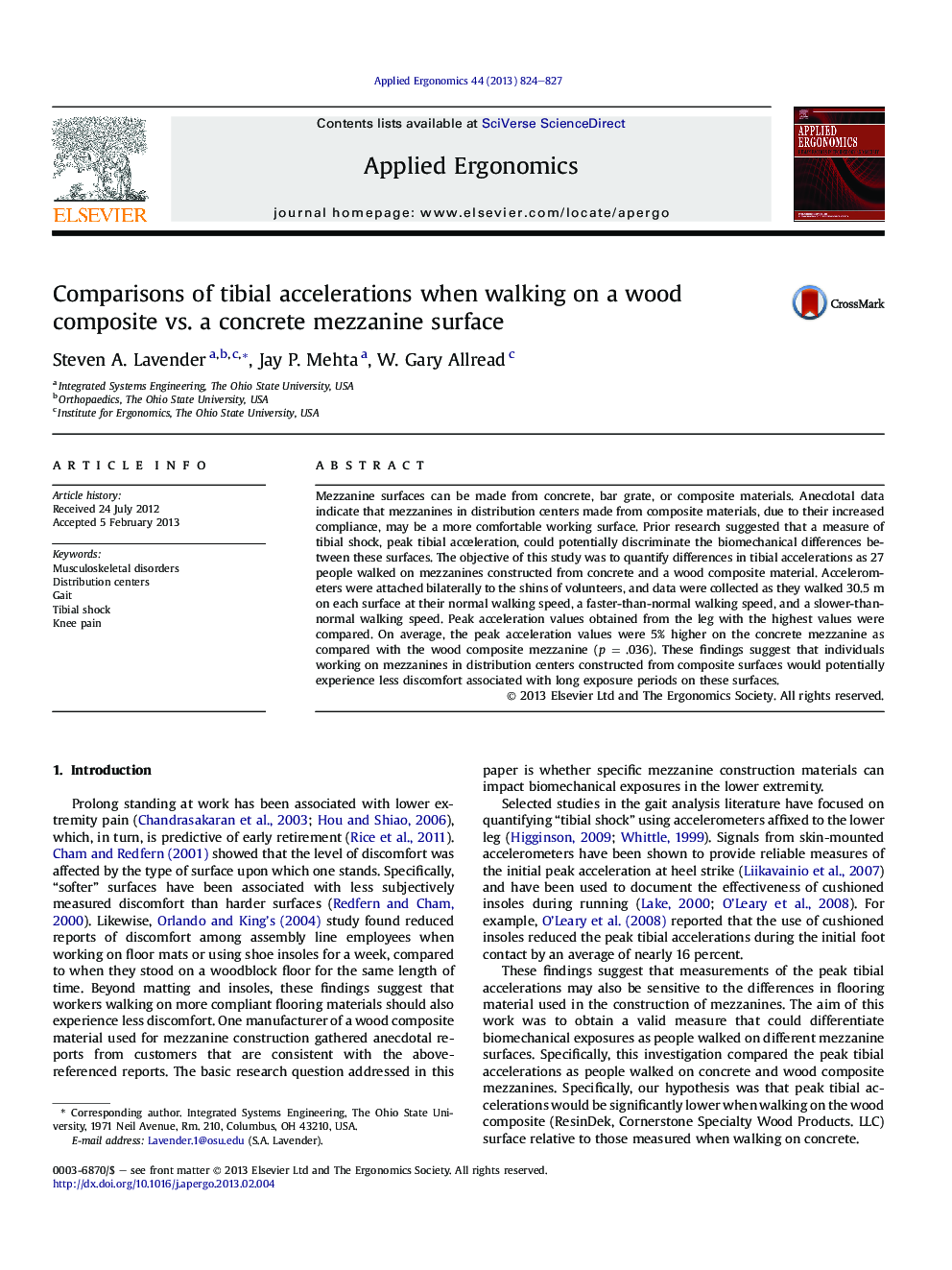| Article ID | Journal | Published Year | Pages | File Type |
|---|---|---|---|---|
| 549341 | Applied Ergonomics | 2013 | 4 Pages |
Mezzanine surfaces can be made from concrete, bar grate, or composite materials. Anecdotal data indicate that mezzanines in distribution centers made from composite materials, due to their increased compliance, may be a more comfortable working surface. Prior research suggested that a measure of tibial shock, peak tibial acceleration, could potentially discriminate the biomechanical differences between these surfaces. The objective of this study was to quantify differences in tibial accelerations as 27 people walked on mezzanines constructed from concrete and a wood composite material. Accelerometers were attached bilaterally to the shins of volunteers, and data were collected as they walked 30.5 m on each surface at their normal walking speed, a faster-than-normal walking speed, and a slower-than-normal walking speed. Peak acceleration values obtained from the leg with the highest values were compared. On average, the peak acceleration values were 5% higher on the concrete mezzanine as compared with the wood composite mezzanine (p = .036). These findings suggest that individuals working on mezzanines in distribution centers constructed from composite surfaces would potentially experience less discomfort associated with long exposure periods on these surfaces.
► Mezzanines in distribution centers (DCs) can be made from different materials. ► DC mezzanine construction materials may affect lower extremity discomfort. ► Peak tibial accelerations at heel strike were compared on 2 types of mezzanines. ► Tibial accelerations were 5% less on a wood composite versus a concrete surface.
